|
|

Viewed towards the sea this time; the Talbot’s with its four smoking chimneys; Rodney Begg told the Archive “I spent about nine months on the shift lab with Stan Agar and learned to weigh off a sample of slag or iron – while the scrap kibbles rolled past – no mean feat!”. Malcolm Moore advises: ”My dad was a first hand on the Talbots, he retired (pensionless) about 1970. The Works did him no favours!”
Many thanks to Malcolm Moore for that update.
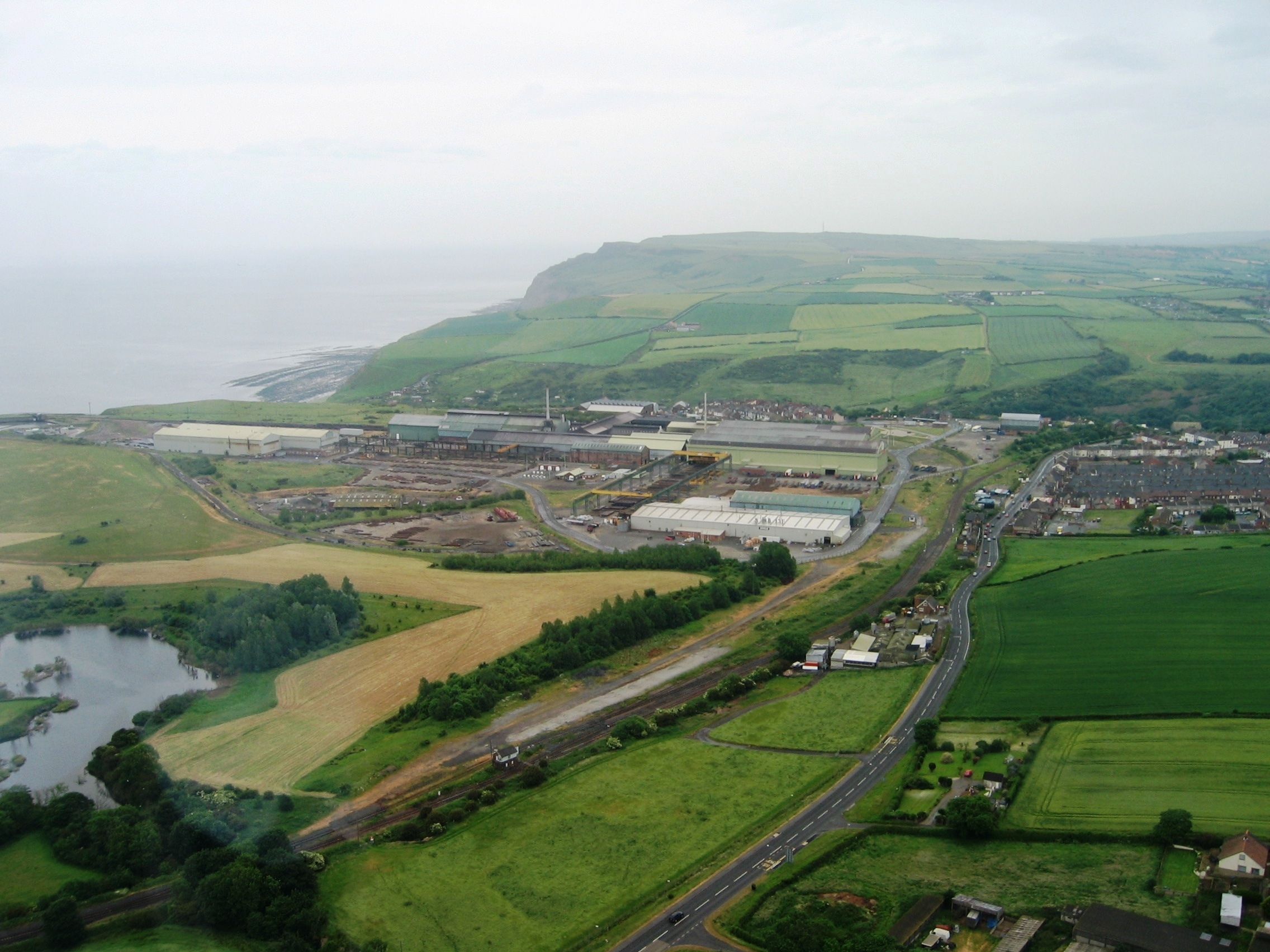
A completely emasculated Skinningrove steel works now; almost a green field site, merely a merchant mill producing special sections to feed the plant that has sprung up mid-left of the image – Caterpillar. Not forgetting all of the other special sections made here of course!
Image courtesy of Owen Rooks.

You had to watch out for these – they had a habit of sneaking up on you when you were crossing the floor!As Vic Nicholas advised after a mistake in the original commentary: “That is an ingot coming out of the Salem Bloom furnace it would be going direct to the 42″ breakdown mill (Cogging) before it goes to be either reheated or skidded direct to the mill. Can’t roll anything direct from the bloom furnace it’s just to big”.
Image courtesy of the Pem Holliday Collection, many thanks to Vic Nicholas for correcting our original error.

The photograph shows the stacking machine which was installed around 1992. The machine is fed by rollers with single bars then the feed bank pushes them and turns them before putting them onto a table which lowers to enable the next bar to be stacked. The complete stack is then lifted by the table onto the rollers which passes the bundle through the strapping machine which is then ready to load. Martin Byers is standing in the control pulpit. The section is a Single Grouser that is used for Caterpillar track shoes.
Image and information courtesy of Colin Hart.

The Archive originally posted this image of the 36 inch mill men with a request for names and a possible date. David McGill advised: “left to right: unsure, Bill Rigg, Wally Hall, John Curnow, George Pearson, Dave Hick”. Hugh Bernard told the Archive: “I have just been looking at the images of Skinningrove and came across this picture. The man on the extreme left is my father, John Bernard who was the Rolling Mill Manager. I have a copy of the photograph in the family archives. My father a Scot worked at Skinningrove until his death in 1970”.
Thanks to David McGill and Hugh Bernard for the names.

These are the cooling banks in the 36” Mill finishing prior to the Lamberton straightening machine. Colin Hart advised: “The door on the left was later sheeted over (covered) to prevent noise as it was facing Carlin How”.
Additional information courtesy of Colin Hart.
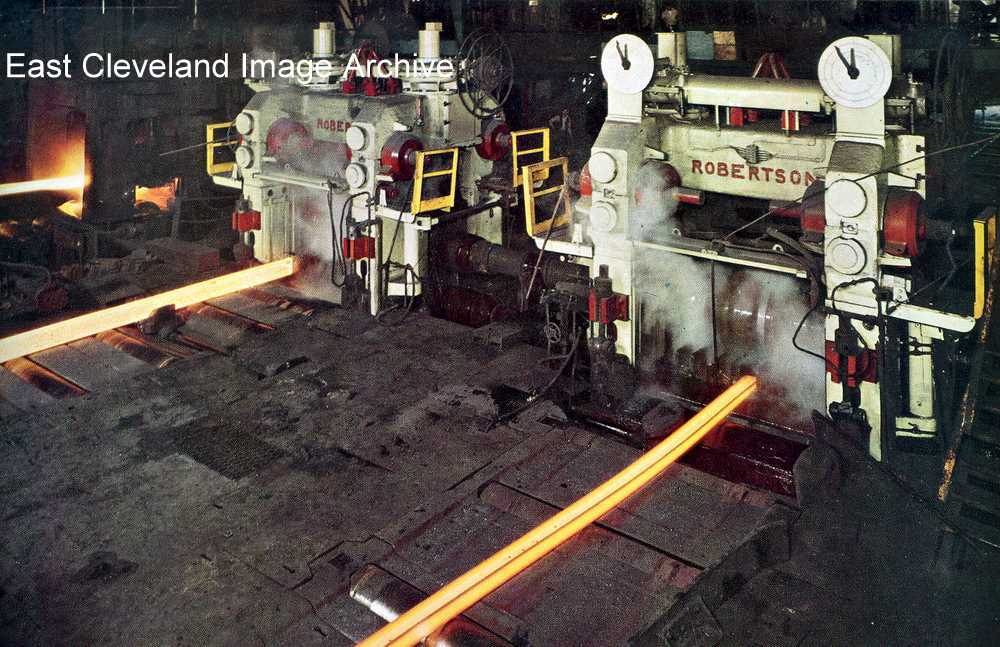
This image of the 36 inch Mill encouraged Rodney Begg to advise: “I used to spend many a happy hour on the footbridge over the output side of these two stands – trotting between the two, taking pass temperatures with a hot filament optical pyrometer when we were making 8 x 8 angles or rails – so we could prevent failure problems due to either cooling the steel too quickly or not cooling it enough. This left too open a crystal structure in the steel”.
Thanks to Rodney Begg for the update.
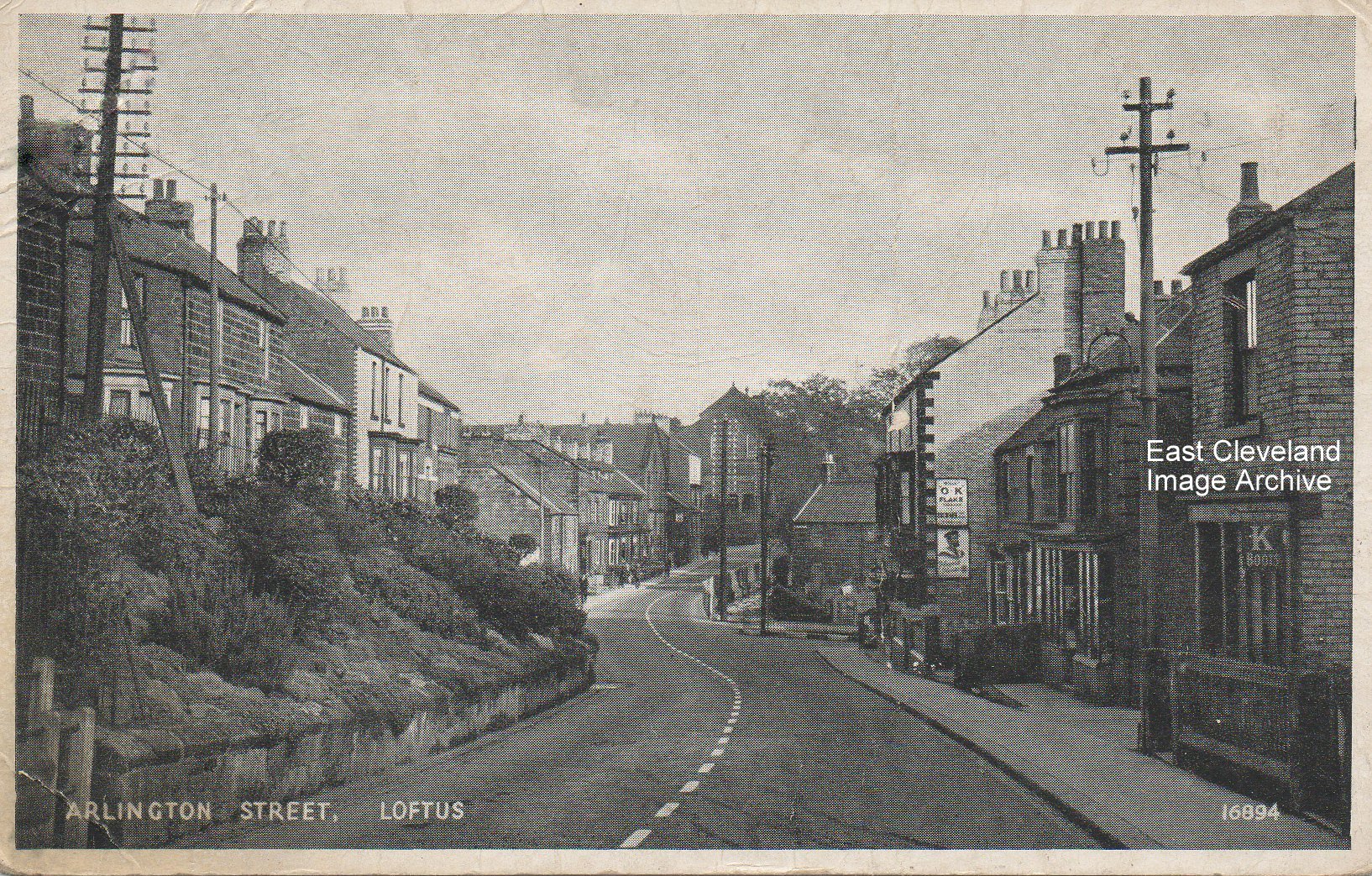
Must be the most photographed street in Loftus; the gardens on the left and the chapel on the hill made it a lovely picture. In this one in the right foreground is Tim Lines boot and shoe repair shop; what was the shop next to it, was it his shoe shop? Please tell. M. Flegg has advised: “The shop down from the shoe sales shop was where the shoe repairs were done by ‘uncle Tim’”.
Many thanks to M. Flegg for the update.
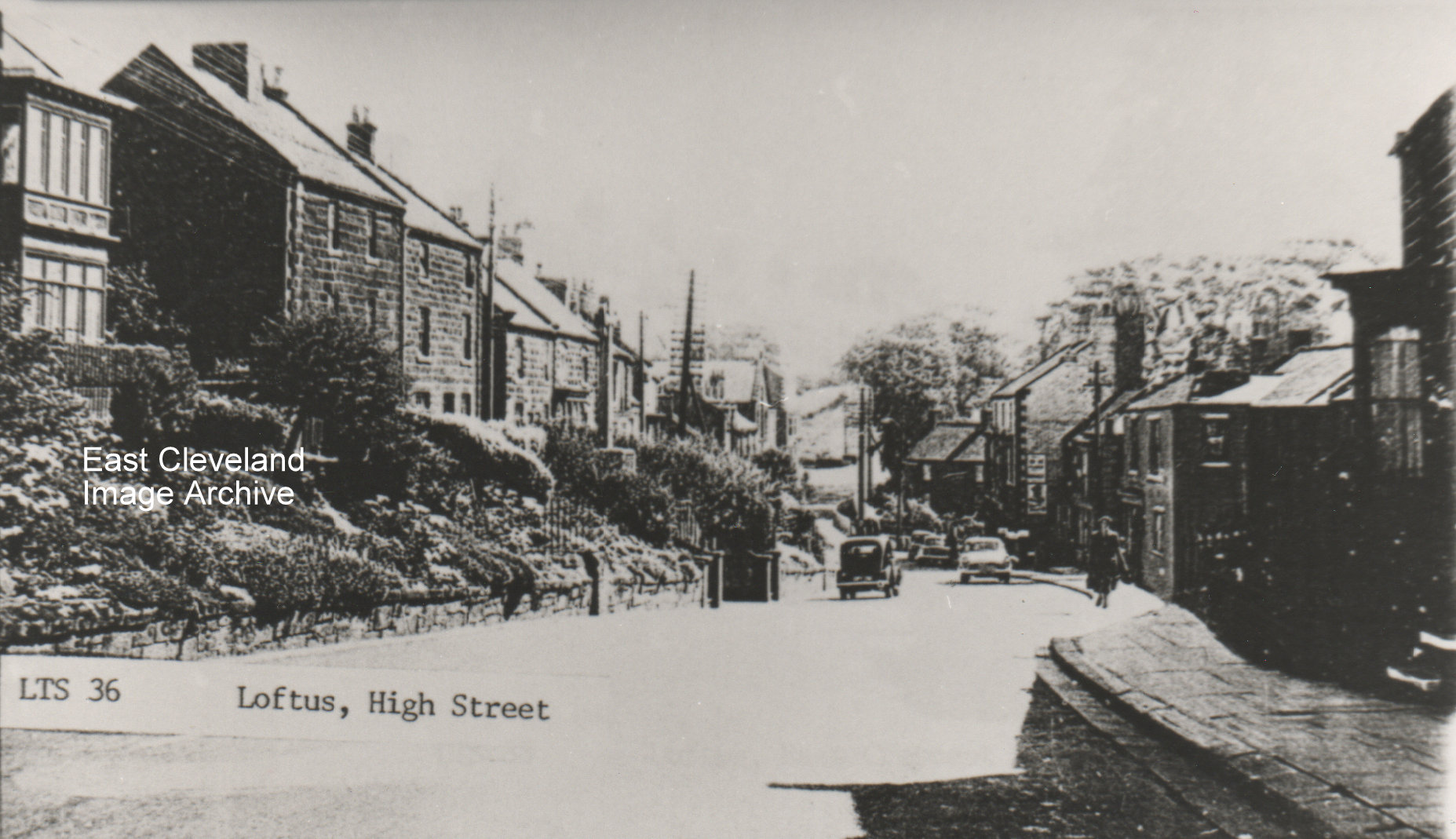
Loftus again looking east from the Market place; doesn’t look very busy. The Wesleyan chapel has gone and the car would seem to indicate the 1950’s. A positive dating would be welcome.
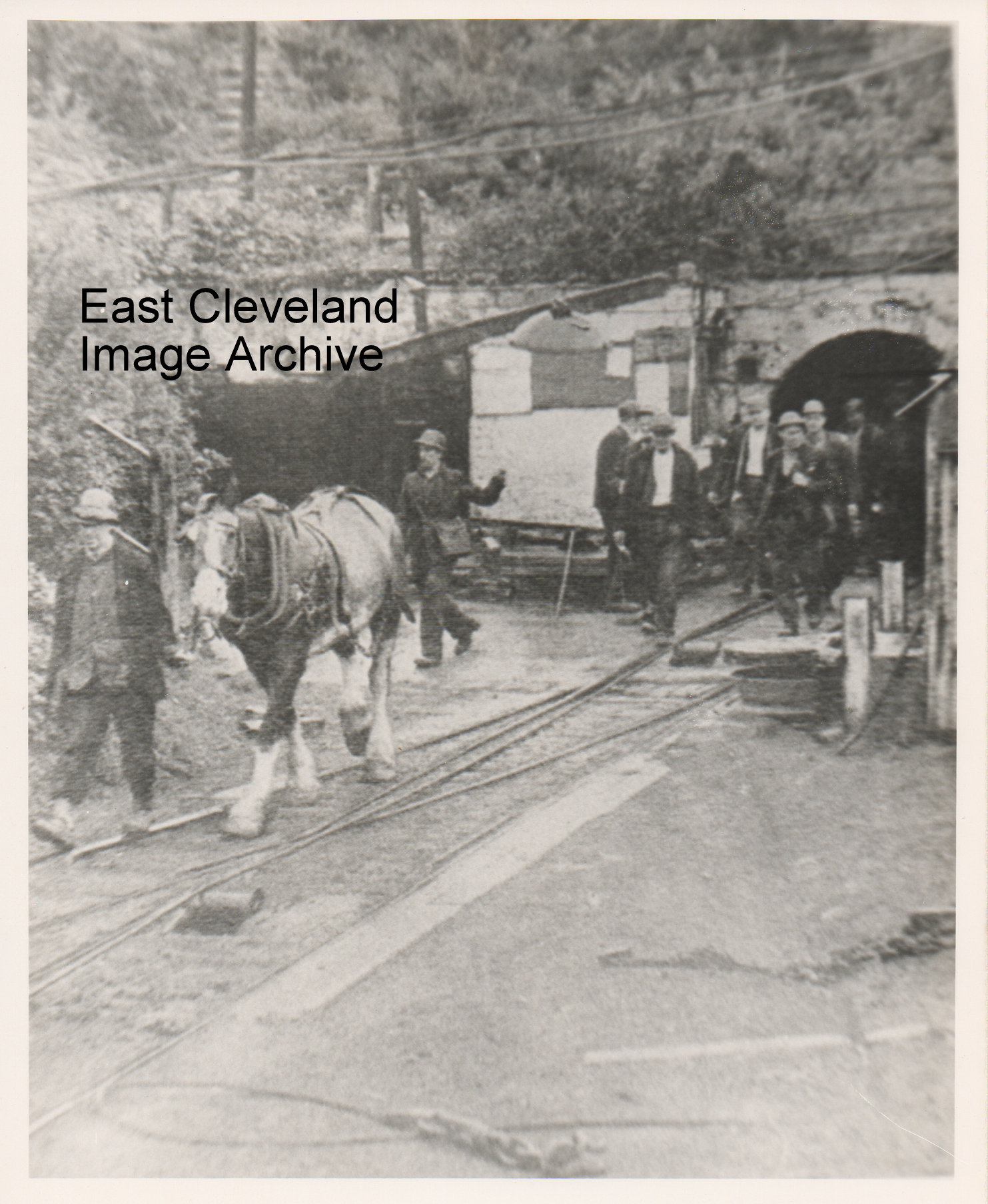
Here’s a group of miners and a pit pony (note to describe as a pony is a wrong description!) comprising the last shift coming out-bye at the Trustee Drift, Eston Mine, 18th September 1949. The mine had worked its 99 year lease, to the day. You can see the pulleys, rollers and cables of the main and tail haulage system for moving the setts around.
|
|










Recent Comments